As the sun paints the vast landscapes in hues of gold and amber, hunters from far and wide gather in pursuit of one of Montana’s most elusive treasures — the majestic mule and whitetail deer.
Getting ready for a Montana deer hunt isn’t only about getting your licenses and permits in order; it’s about a comprehensive understanding of sanctioned guidelines and ethical hunting practices. These Montana deer hunting regulations are more than just a set of rules; they’re the keys to unlocking an adventure of a lifetime.
In this article, we’ve dug deep into the Montana Fish, Wildlife, and Parks (FWP) regulation handbook to prepare you for your next memorable hunt. We’ll walk you through all you need to know from the Dos and Don’ts before, and during, to those after a successful hunt — including aircraft use, baiting, hunter harassment, and even waste disposal.
- Related article: Deer Hunting in Montana
So, lace up your hunting boots, sharpen your senses, and prepare to immerse yourself in the allure of Montana’s deer-hunting frontier. Welcome to the wild adventure that awaits beneath the big sky – where the pursuit of deer is not just a pastime but a sacred dance with nature itself.
7 Key Takeaways on Montana Deer Hunting Regulations
- Before hunting on private property in Montana, you must get permission from either the landowner, the lessee, or their agents to hunt deer.
- It is important to adhere to certain regulations when hunting by archery such as not using bow sight or arrow containing artificial light and luminous chemicals.
- When hunting mule deer bucks in Montana, follow carcass disposal guidelines to stop the spread of Chronic Wasting Disease.
- Hunters are required to wear a material of hunter orange color above their waist while hunting, to ensure hunter safety.
- During the hunting of game animals, avoid littering, whether it’s animal remains or trash.
- Strict rules on aircraft use, artificial light, baiting, and motorized vehicles aim to preserve the state’s wildlife.
- Respecting hunting laws and regulations in Montana contributes to sustainable deer populations and a rich hunting heritage.
Montana Deer Hunting Guidelines
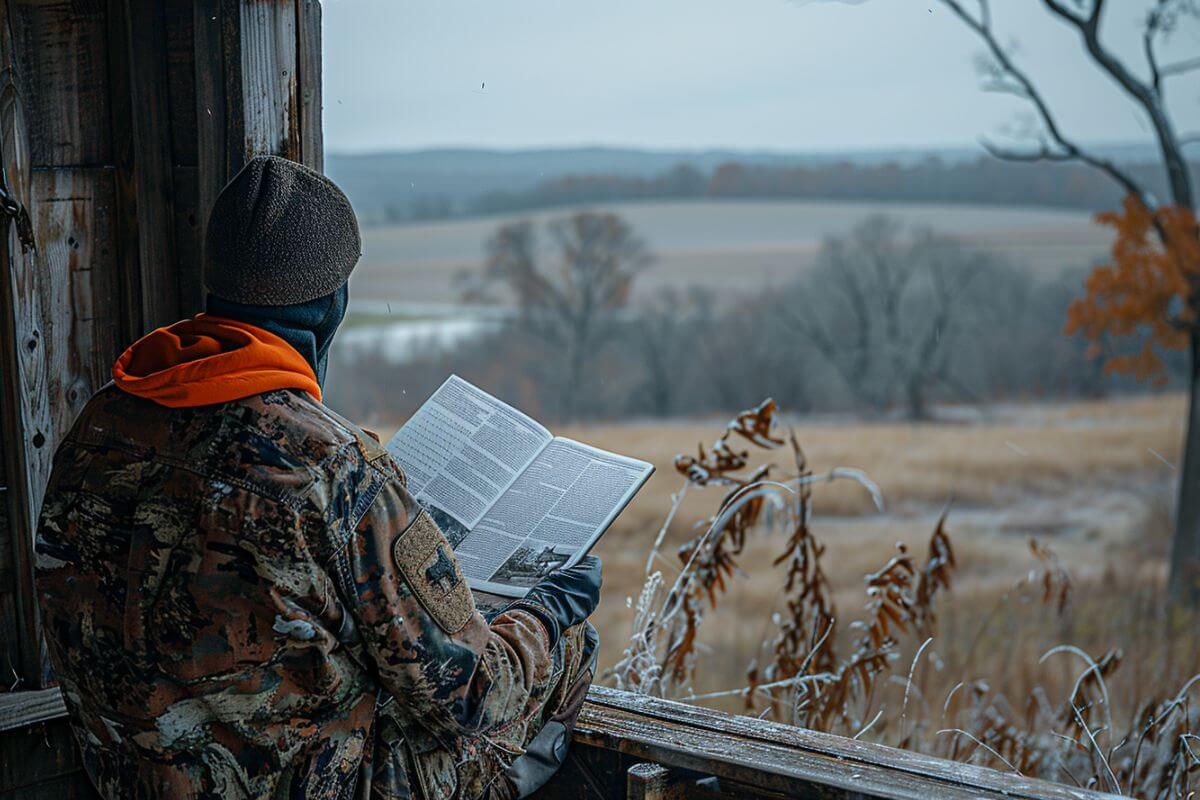
Deer in Montana, including both mule and white-tailed deer, are among the prized game species in the state. With access to public lands including federal lands and national forests, Montana offers an ideal hunting environment for game-hunting enthusiasts.
Whether you choose to venture into the vast public lands or secure permission in private lands as an apprentice hunter or a seasoned one, Montana’s diverse landscapes offer a unique backdrop for this outdoor pursuit.
But before you step out onto Montana’s serene and rugged landscapes to hunt for these majestic creatures, understanding the local laws and rules is pivotal. These hunting regulations provide enthusiasts with a thrilling opportunity to engage in the rich tradition of game hunting.
In Hunting District 502, notable for its record-setting of 1,321 mule deer shot by hunters 31 years ago, the regulations and population management strategies have evolved to maintain a healthy and sustainable mule deer population.
From the intricacies of what to do during deer seasons to mule deer regulations, this overview delves into the dynamic realm of Montana deer hunting.
Montana Deer Hunt Dos and Don’ts
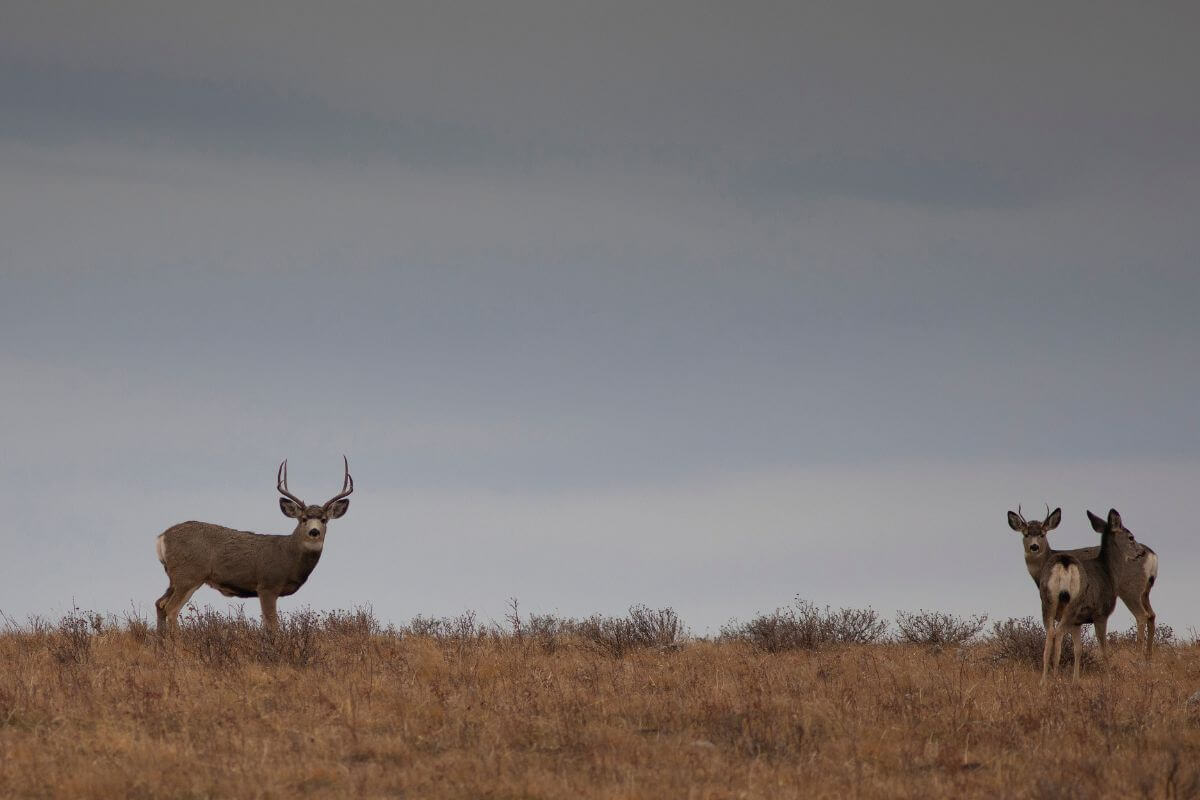
As you gear up for this thrilling pursuit of white-tailed or mule deer in the picturesque landscapes of Montana, it’s essential to be well-versed in the dos and don’ts that contribute to a successful and responsible hunting experience.
A Montana deer hunt is an exhilarating adventure that demands a blend of skill, patience, and adherence to ethical practices. Let’s delve into the key guidelines and insights that will enhance your deer hunting excursion.
Before a Montana Deer Hunt
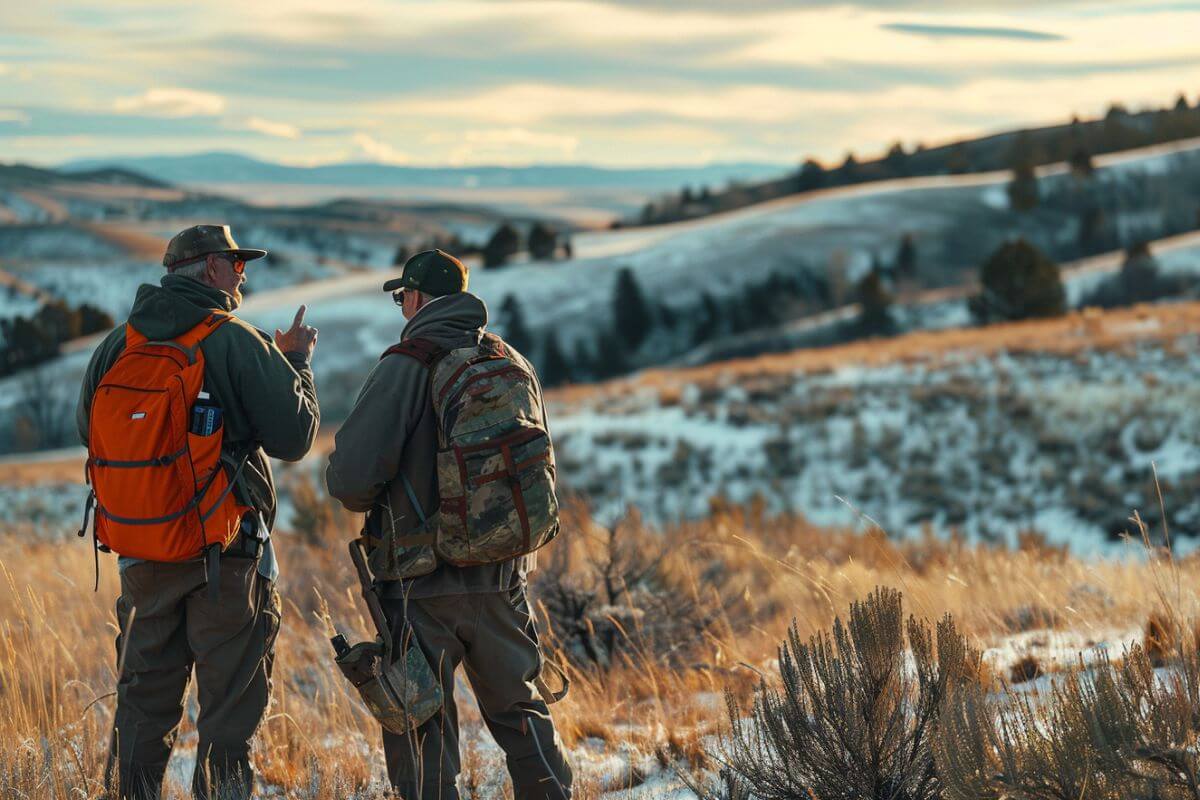
Montana holds a vibrant yet meticulously maintained ecosystem ensuring the longevity of deer species. As you ready your bow or firearm for the hunt, there are specific regulations set by the Montana Fish, Wildlife, and Parks (Montana FWP) that you should be privy to.
Let’s get a handle on the crucial dos and don’ts before you embark on a Montana deer hunt:
- Landowner Permission – Always seek permission to hunt on private properties from the landowner, lessee, or their agents. Don’t ever hunt without prior consent; this is how misunderstandings arise. Montana’s School Trust Lands, some of which are open to hunting, also require permission.
- Archery Equipment – Ensure your archery equipment meets specified criteria and is legal for use during the archery season. A hunting bow for game animals shall be a longbow, flatbow, recurve bow, compound bow, or any combination of these designs. Don’t use chemical, explosive, or otherwise illegal archery equipment, or venture into unauthorized bowhunting districts.
- Firearms – The use of firearms, such as rifles, handguns, shotguns with 0, 00, or slugs, and muzzleloaders, as well as archery equipment and crossbows, is permitted for hunting game animals. All other means of capturing the game are not allowed.
- Hunter Orange Requirement – Wear a minimum of 400 square inches of hunter orange, visible above the waist, if you are hunting or guiding. However, if you are a licensed bowhunter pursuing deer during the Archery Only Season or in an archery-only hunting district, you are exempt from meeting the Hunter Orange Requirement.
The most important thing of all is don’t get caught without the necessary deer licenses. No matter your expertise or years of hunting, do a quick pre-departure check to avoid disappointments.
When you’re stepping onto Montana’s beautiful landscape, it’s not just about the thrill of the hunt – it’s a dance with nature’s rhythms. By respecting these dos and don’ts set by Montana FWP, you’re not only ensuring your own lawful and safe experience but also contributing to the continued health of the state’s game populations.
During a Montana Deer Hunt
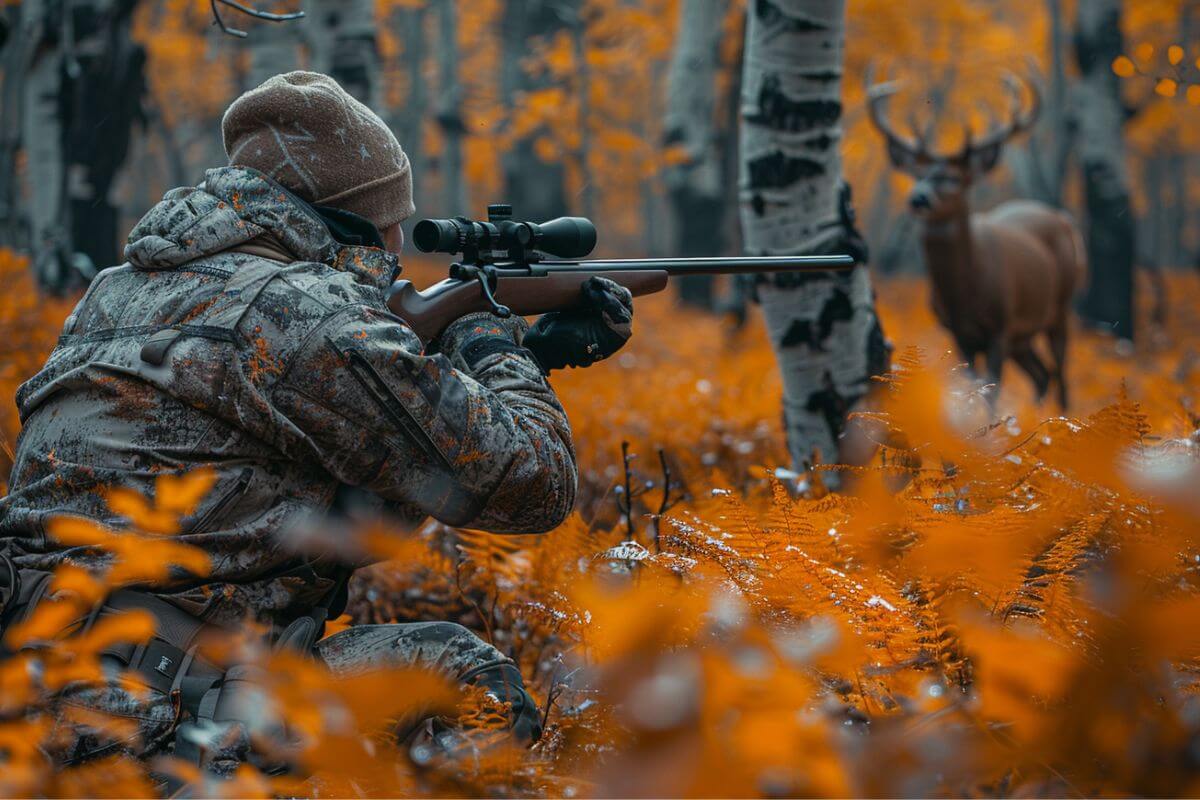
Hunting for deer in Montana can be an exciting and fulfilling experience for those who love to explore the wilderness and enjoy the thrill of the hunt. However, it is important to understand the dos and don’ts of this activity to ensure safety, success, and conservation.
Here’s a quick rundown of the dos and don’ts during your hunting day so you stay on the right side of the law, and more importantly, keep yourself and other hunters safe:
- Aircraft Use – You should not kill, take, or shoot at a deer from an aircraft.
- Artificial Light – It is illegal to use artificial light to help you hunt deer, including the use of rifle scopes that project light onto the target.
- Baiting – It is against the rules to use bait, salt lick, trap, snare, or set gun to hunt or try to hunt deer.
- Dogs – This isn’t a game of fetch; leashes are for mountain lions and spring black bears.
- Disturbing Traps or Trapped Animals – If you come across a trap or snare that belongs to someone else, do not damage, disturb, or move it. Additionally, do not take any animals that may be caught in the trap or snare without first obtaining permission from the owner.
- Hunting Hours – Think of it as the official hunting day – a half-hour before sunrise to a half-hour after sunset.
- Recorded Animal Sounds – Do not use any recorded or electrically amplified bird or animal calls or sounds, or imitations of them, to aid in hunting, taking, killing, or capturing deer or any wildlife, except predatory animals, wolves, and birds not protected by state or federal law.
- Motion-Tracking Devices – Using any electronic device or mechanism to track the motion of a deer and provide information about its movement to the hunter is prohibited.
- Motorized Vehicles – When hunting deer, it’s against the law to do so from a vehicle that moves by itself or is pulled. To be lawful, you need to have both feet on the ground and be outside the vehicle. However, holders of the Permit To Hunt From A Vehicle are allowed to do so.
- Hunter Harassment – It is not permissible to disrupt the legal hunting of a deer or any wild animal, nor to disturb someone who is legally hunting with the intention of preventing the animal from being caught.
These hunting regulations form a code of ethics and safety that are essential to maintaining the rich heritage of hunting in Montana. This all boils down to having respect for the wildlife, respect for the land, and respect for each other.
It’s not just about bagging the big one; it’s also about enjoying the journey and ensuring there are plenty of deer to hunt in the future. So, armed with this knowledge, get out there, respect the rules, and may you have a safe and successful game hunting!
After a Montana Deer Hunt

After a successful mule deer harvest in Montana, it is important to follow best practices to ensure compliance with hunting regulations. Let’s break down the post-hunt to-do list when deer hunting in Montana:
- Carcass Disposal – After you successfully hunt a mule deer, it’s important to dispose of the carcass properly to prevent the spread of chronic wasting disease and other health risks. Remember to leave the brain matter and spinal columns at the kill site and dispose of all other parts in a class II landfill after processing.
- Evidence of Sex – Retain crucial evidence of your deer’s sex, whether through antlers or other means, until the carcass is processed. This is essential to help enforce hunting district limitations accurately.
- Inspection by Warden – Understand that your post-hunt experience can include showing your deer to FWP Enforcement personnel for inspection when requested. This is just routine and respectful cooperation can go a long way.
- Kill Site Verification – Should a Department Game Warden request it, be prepared to return to the kill site for verification. Think of it as a sort of hunting memory lane, except in this case, it’s about verifying your claim and respecting natural protocols.
- Littering – It should go without saying, but littering isn’t just bad form, it’s illegal. Don’t spoil the beauty of Montana’s wilderness by leaving behind any debris, including animal remains and garbage.
- Possession of Wildlife Parts – It is not permissible for you to have, transport, or ship any portion of a deer that was unlawfully hunted, captured, or taken, whether it was taken inside or outside of Montana.
- Restitution for Unlawfully Taken Wildlife – If someone is found guilty of or charged and forfeits bond or bail for unlawfully killing, taking, or possessing deer in Montana, they will have to repay the state. The amount of restitution for a trophy animal, such as an Antlered Deer, under Montana law is $8,000.
It’s a given that after the excitement of a successful hunt, there’s still a vital checklist of ethical and legal responsibilities to follow. Besides, why spoil a fantastic day in the Montana wild by leaving any loose ends?
Remember, respect for the rules and regulations is what makes hunting sustainable and rewarding, not just for you but for future generations and the state’s vibrant wildlife.
Montana Deer Hunting Regulations Final Thoughts
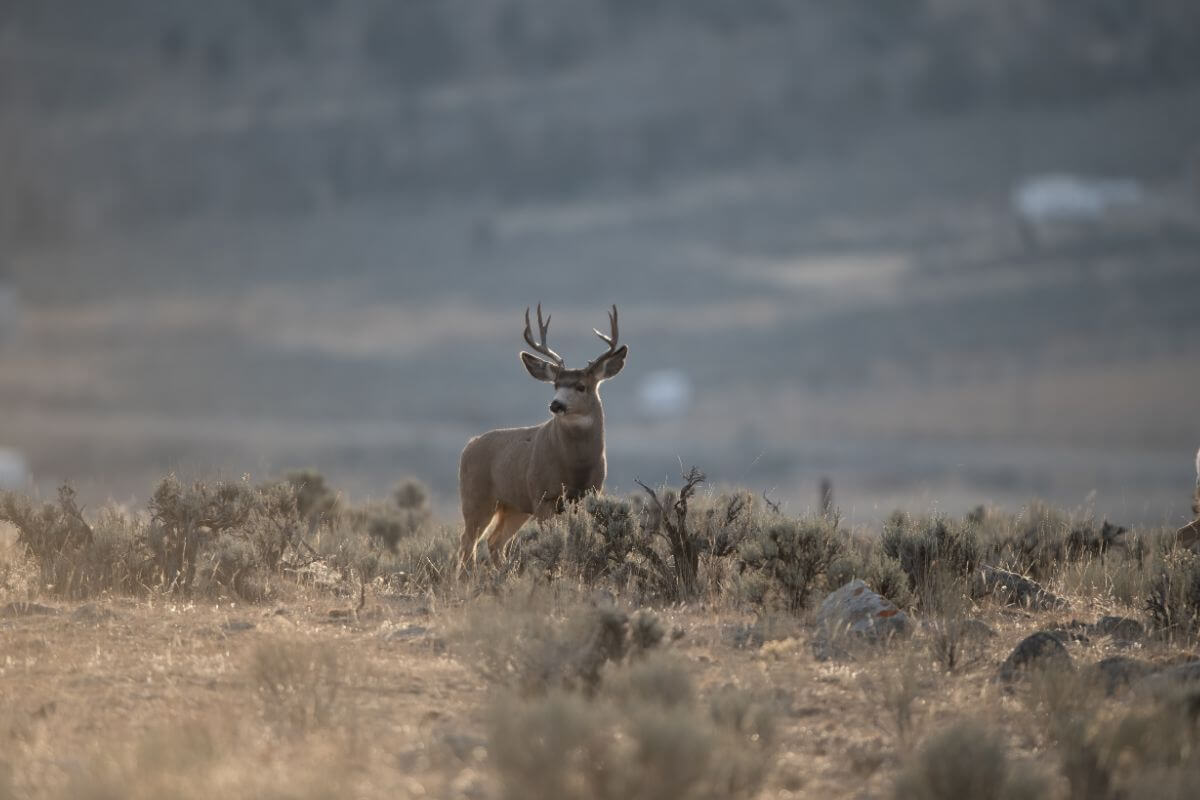
As we’ve explored the intricate web of Montana’s deer hunting regulations, it becomes evident that this isn’t solely about obeying laws; it’s a pact between hunters and the land they traverse.
By actively adhering to licensing requirements, respecting private property, and responsibly managing your harvest, you’re not just following rules – you’re becoming an integral part of Montana’s sustainable hunting legacy.
These regulations aren’t designed to detract from the thrill of the hunt but rather enhance it within a framework that cherishes the conservation of wildlife, the sanctity of the landscape, and the safety of all who share this vast wilderness.
By valuing these laws as guardians of Montana’s precious resources, you elevate your hunting experience to a deeper, more respectful communion with nature. So pick up that updated Montana hunting guide, understand your role in the larger ecosystem, and let the mountains of Big Sky Country echo with your triumphant yet conscientious hunt.
Montana Deer Hunting Regulations FAQs
1. Can a Nonresident Hunt Deer in Montana?
Nonresidents are allowed to hunt deer species in Montana by obtaining the required licenses and permits.
2. Can Foreigners Hunt in Montana?
Foreigners can hunt in Montana. Nonresidents, including those from other countries, can hunt in Montana by obtaining the necessary licenses and permits.
3. Can You Hunt With an AR 15 in Montana?
It is legal to hunt with an AR-15 in Montana, subject to specific regulations outlined by the Montana Fish, Wildlife & Parks.
4. What Can You Hunt in Montana Without a License?
In Montana, certain animal species such as predators and nongame creatures are not protected by federal and/or state laws or regulations. This means that they can be hunted year-round by both resident and non-resident hunters without requiring any license.
Examples of such species include badgers, raccoons, red foxes, hares, rabbits, ground squirrels, marmots, tree squirrels, porcupines, and prairie dogs.
5. How Much Is a Nonresident Deer Hunting License in Montana?
The cost of a nonresident deer hunting license in Montana typically ranges from $300 to $700.
Expand your knowledge and enjoy a richer learning experience about Montana below:

